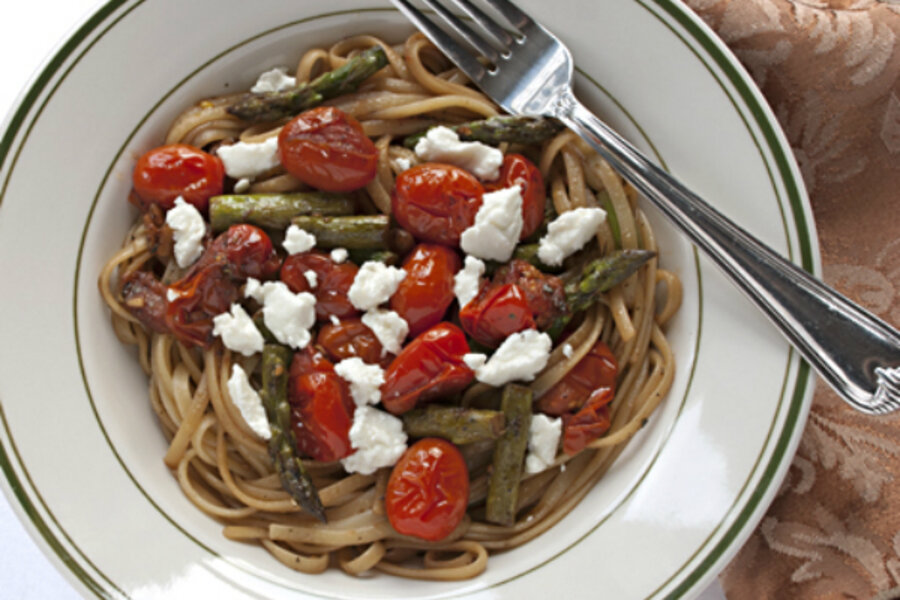By Terry Boyd, Blue Kitchen
Serves 2
12 to 16 asparagus spears, tough ends trimmed, cut into 1-1/2-inch pieces (about 1-1/2 cups)
Salt
7 ounces linguine (or fettuccine or spaghetti)
3 tablespoons olive oil
1-1/2 cups cherry tomatoes
Freshly ground black pepper
2 cloves garlic, minced
1 teaspoon dried oregano (or 1 tablespoon fresh)
2 tablespoons balsamic vinegar
2 ounces goat cheese
1. Bring a large pot of water to boil for the pasta. When it comes to a full boil, blanch the asparagus pieces by dumping them in the pot of water, cooking them for 1 minute, then transferring them to a bowl of iced water with a slotted spoon.
2. Cook the pasta to al dente, following the package instructions. Meanwhile, heat the oil in a large nonstick sauté pan over medium flame. Add the tomatoes and sauté until they begin to soften, burst and brown slightly, stirring frequently, about 4 to 5 minutes.
3. Drain the asparagus pieces and add them to the pan. Cook, stirring frequently, for about 2 minutes. Season with a generous grind of black pepper. Add garlic and oregano to pan and cook, stirring, until just fragrant, about 45 seconds. Remove from heat and stir in vinegar.
5. Drain pasta, reserving 1/2 cup of pasta water. Add pasta to asparagus and tomato mixture and toss to coat. If the dish seems dry, add pasta water 2 tablespoons at a time as needed. Taste and adjust seasonings. Divide between two pasta bowls, crumble goat cheese over pasta and serve.








